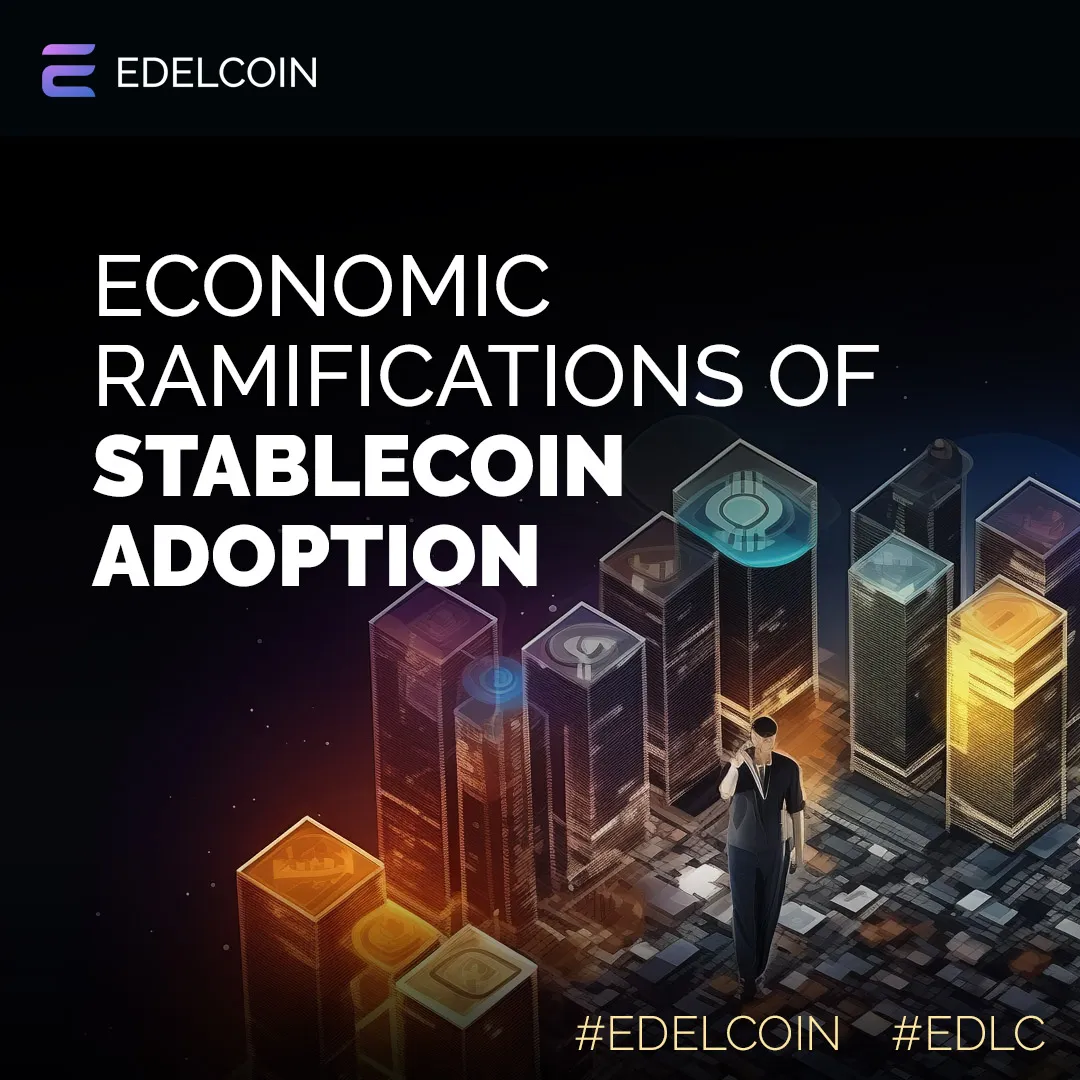
Economic Ramifications of Stablecoin Adoption
Unveiling Edelcoin's Potential Impact on Traditional Finance
The advent of cryptocurrencies has ushered in a new era of digital finance, with stablecoins emerging as a pivotal innovation bridging the gap between the volatile crypto markets and the stable value of traditional currencies. Unlike their more volatile counterparts, stablecoins are pegged to stable assets like fiat currencies or metals, offering the benefits of digital currency without the wild price swings. As stablecoin adoption accelerates, it's crucial to examine its economic implications and the unique position of Edelcoin in reshaping the landscape of traditional finance.
The Rise of Stablecoins: A New Financial Paradigm
Stablecoins have seen explosive growth, with their total market capitalization exceeding $150 billion in 2023. This surge is indicative of their increasing utility in facilitating fast, low-cost, and borderless transactions while maintaining price stability. They serve various functions, from everyday transactions and remittances to acting as a safe haven for crypto investors during market turbulence.
However, the adoption of stablecoins extends beyond individual users and crypto enthusiasts. Financial institutions are beginning to explore stablecoin integration for payment systems and cross-border transfers, recognizing their potential to streamline operations and reduce costs. For instance, JPMorgan Chase launched its own stablecoin, JPM Coin, to facilitate instant payment transfers between institutional accounts.
Economic Implications of Widespread Stablecoin Adoption
1. Impact on Monetary Policy and Financial Stability
The proliferation of stablecoins poses complex challenges and opportunities for traditional monetary policy. Central banks could find it increasingly difficult to implement effective monetary policy if stablecoins significantly replace national currencies for daily transactions. This displacement could undermine the central banks' ability to control money supply and interest rates, potentially destabilizing financial systems.
However, some argue that stablecoins could complement central bank digital currencies (CBDCs), providing a testing ground for digital currency technologies and fostering innovation in financial services. The European Central Bank and the Federal Reserve are exploring CBDCs, indicating a potential synergistic relationship with stablecoins.
2. Reducing Friction in Financial Transactions
Stablecoins promise to revolutionize the financial landscape by drastically reducing transaction costs and settlement times. Traditional cross-border transactions, which can take days to settle and incur hefty fees, can be executed almost instantaneously with minimal costs using stablecoins. This efficiency could significantly boost global trade and financial inclusion, particularly in developing countries where access to banking services is limited.
3. Risk of Disintermediation
Banks and financial institutions face the risk of disintermediation as stablecoins enable direct transactions between parties without the need for intermediaries. This could compress profit margins for traditional financial services, compelling them to innovate or risk obsolescence. Nonetheless, it also offers an opportunity for these institutions to integrate stablecoin technologies to enhance their own services.
Edelcoin: A New Contender with Transformative Potential
Amidst the burgeoning landscape of stablecoins, Edelcoin (EDLC) emerges as a notable player with the potential to significantly impact traditional finance. Trading at $1.06 USD with a market cap of approximately $5.85 billion, Edelcoin represents a substantial part of the stablecoin market. Its peg to a stable asset, combined with a self-reported circulating supply that matches its total and max supply, positions Edelcoin as a stable and reliable digital asset for both individual and institutional use.
Edelcoin's Impact on Payment Systems and Remittances
Edelcoin could revolutionize payment systems by enabling real-time, low-cost transactions. For remittances, which are crucial for many developing economies, Edelcoin could offer a lifeline by significantly reducing the costs associated with sending money across borders. In 2021, remittance fees averaged 6.38%, a significant burden on remitters and recipients alike. Edelcoin's efficiency and cost-effectiveness could redirect billions of dollars annually into the pockets of those who need it most.
Potential to Enhance Financial Inclusion
With over 1.7 billion adults worldwide unbanked, Edelcoin has the potential to drive financial inclusion by providing accessible financial services through smartphones and internet connectivity. By circumventing traditional banking infrastructures, Edelcoin can offer unbanked populations a gateway to financial services, empowering them economically and fostering greater participation in the global economy.
Integration with Traditional Finance
Edelcoin's potential for integration with traditional financial systems is particularly promising. Its stable value proposition makes it an attractive tool for financial institutions looking to innovate payment solutions and enhance liquidity management. As Edelcoin gains traction, it could serve as a bridge between the crypto economy and traditional financial markets, facilitating seamless integration of digital assets into everyday financial operations.
Conclusion
The adoption of stablecoins like Edelcoin heralds a transformative shift in the financial sector, promising enhanced efficiency, reduced costs, and greater financial inclusion. However, it also presents challenges to traditional financial systems and monetary policy. As the landscape evolves, it will be crucial for policymakers, financial institutions, and the crypto community to navigate these changes collaboratively, ensuring that the benefits of stablecoin adoption are maximized while mitigating potential risks. In this dynamic environment, Edelcoin stands out as a potential catalyst for change, offering a glimpse into the future of finance where digital and traditional systems coalesce for a more inclusive and efficient global economy.

- What's the main purpose of stablecoins?
a. To outperform cryptocurrencies like Bitcoin.
b. To offer stability pegged to fiat currencies or assets.
c. For use in online gaming and virtual environments.
2. What challenges do stablecoins pose to central banks?
a. They can't be used for international trade.
b. Integrating with banking software is difficult.
c. They may disrupt effective monetary policy.
3. How could Edelcoin impact remittances?
a. Increase the cost due to volatility.
b. Reduce costs, making remittances more affordable.
c. Limit services to technologically advanced countries.
Correct answers: 1b, 2c, 3b.
Contents





